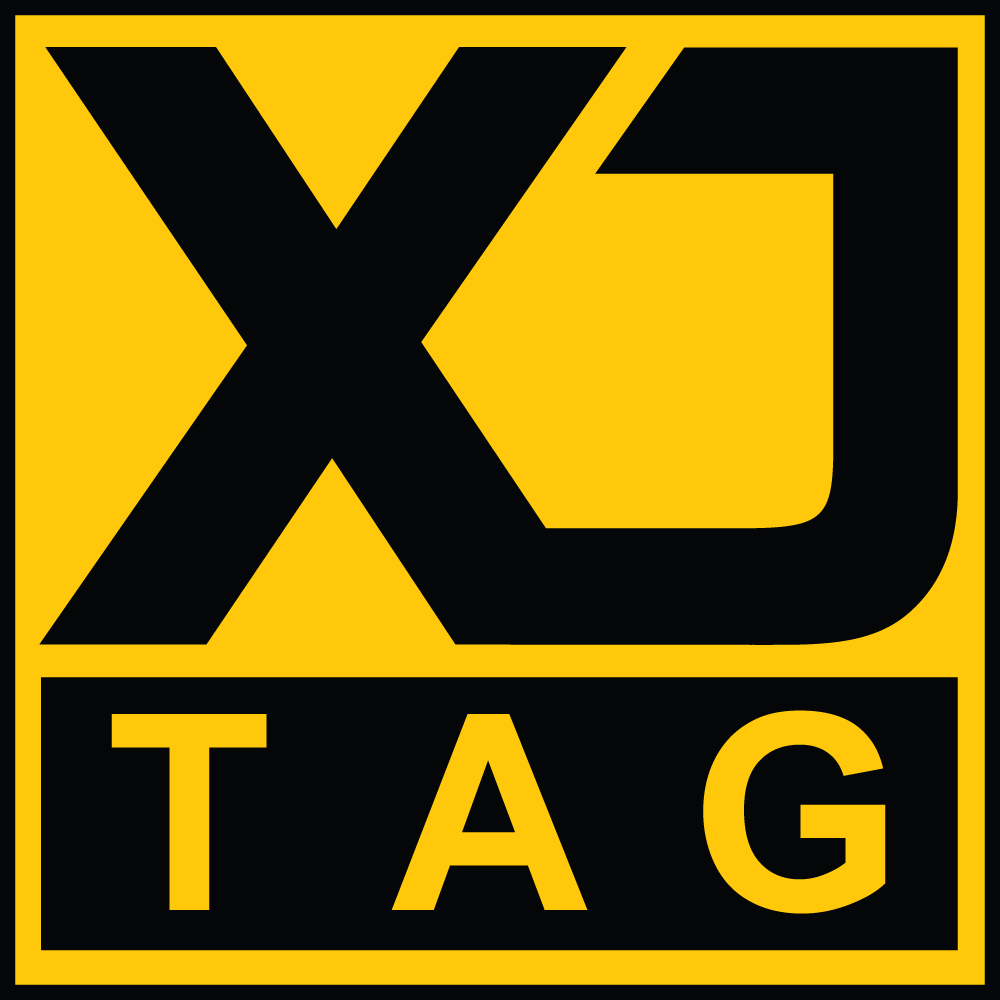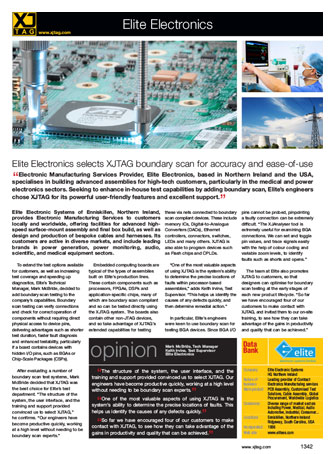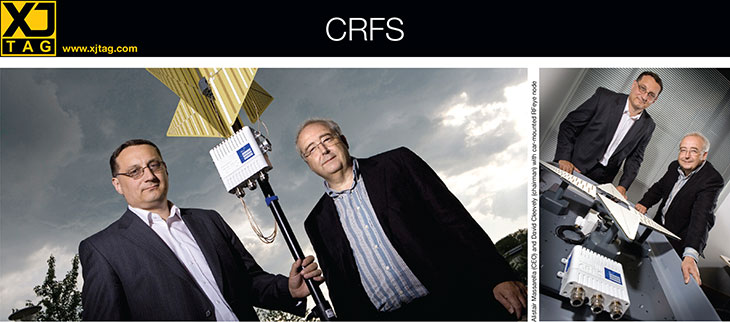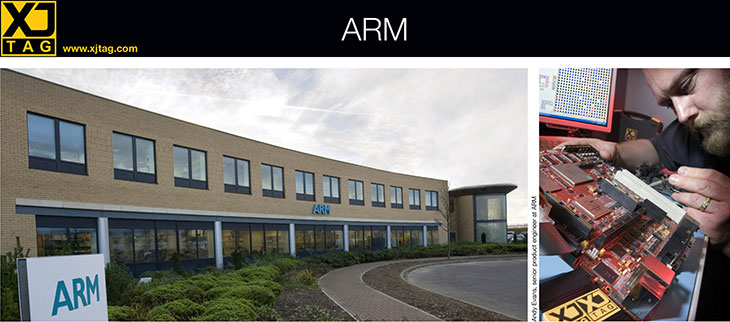
Elite Electronics selects XJTAG boundary scan for accuracy and ease-of-use
Electronic Manufacturing Services Provider, Elite Electronics, based in Northern Ireland and the USA, specialises in building advanced assemblies for high-tech customers, particularly in the medical and power electronics sectors. Seeking to enhance in-house test capabilities by adding boundary scan, Elite’s engineers chose XJTAG for its powerful user-friendly features and excellent support.
Elite Electronic Systems of Enniskillen, Northern Ireland, provides Electronic Manufacturing Services to customers locally and worldwide, offering facilities for advanced high-speed surface-mount assembly and final box build, as well as design and production of bespoke cables and harnesses. Its customers are active in diverse markets, and include leading brands in power generation, power monitoring, audio, scientific, and medical equipment sectors.
To extend the test options available for customers, as well as increasing test coverage and speeding up diagnostics, Elite’s Technical Manager, Mark McBride, decided to add boundary scan testing to the company’s capabilities. Boundary scan testing can verify connections and check for correct operation of components without requiring direct physical access to device pins, delivering advantages such as shorter test duration, faster fault diagnosis and enhanced testability, particularly if a board contains devices with hidden I/O pins, such as BGAs or Chip-Scale Packages (CSPs).
After evaluating a number of boundary scan test systems, Mark McBride decided that XJTAG was the best choice for Elite’s test department. “The structure of the system, the user interface, and the training and support provided convinced us to select XJTAG”, he confirms. “Our engineers have become productive quickly, working at a high level without needing to be boundary scan experts.”
Embedded computing boards are typical of the types of assemblies built on Elite’s production lines. These contain components such as processors, FPGAs, DSPs and application-specific chips, many of which are boundary scan compliant and so can be tested directly using the XJTAG system. The boards also contain other non-JTAG devices, and so take advantage of XJTAG’s extended capabilities for testing these via nets connected to boundary scan compliant devices. These include memory ICs, Digital-to-Analogue Converters (DACs), Ethernet controllers, connectors, switches, LEDs and many others. XJTAG is also able to program devices such as Flash chips and CPLDs.
“One of the most valuable aspects of using XJTAG is the system’s ability to determine the precise locations of faults within processor-based assemblies”, adds Keith Irvine, Test Supervisor. “This helps us identify the causes of any defects quickly, and then determine remedial action.”
In particular, Elite’s engineers were keen to use boundary scan for testing BGA devices. Since BGA I/O pins cannot be probed, pinpointing a faulty connection can be extremely difficult. “The XJAnalyser tool is extremely useful for examining BGA connections. We can set and toggle pin values, and trace signals easily with the help of colour coding and variable zoom levels, to identify faults such as shorts and opens.”
The team at Elite also promotes XJTAG to customers, so that designers can optimise for boundary scan testing at the early stages of each new product lifecycle. “So far we have encouraged four of our customers to make contact with XJTAG, and invited them to our on-site training, to see how they can take advantage of the gains in productivity and quality that can be achieved.”

The structure of the system, the user interface, and the training and support provided convinced us to select XJTAG. Our engineers have become productive quickly, working at a high level without needing to be boundary scan experts.
One of the most valuable aspects of using XJTAG is the system’s ability to determine the precise locations of faults. This helps us identify the causes of any defects quickly.
So far we have encouraged four of our customers to make contact with XJTAG, to see how they can take advantage of the gains in productivity and quality that can be achieved.

Company: Elite Electronic Systems
HQ Northern Ireland
Nature of business: Leading provider of Contract Electronics Manufacturing services
Main product: PCB Assembly, Customised Test Solutions, Cable Assembly, Global Procurement, Worldwide Logistics
Customers: Diverse range of market sectors including Power, Medical, Audio Automotive, Industrial, Consumer…
Locations: Enniskillen, Northern Ireland; Ridgeway, South Carolina, USA
Incorporated: 1986
Web site: www.elitees.com

Configure your products














